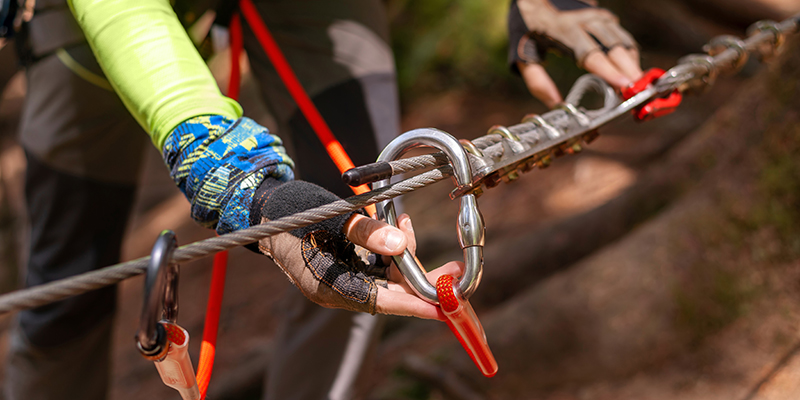
Techniques for Rigging with Kernmantle Rope: Ensuring Stability and Load Distribution
Rigging is a critical aspect of many industrial and outdoor activities, from construction and tree care to rescue operations. To ensure safety and efficiency in rigging, selecting the right rope is crucial. Kernmantle rope, with its unique construction, offers distinct advantages in terms of stability and load distribution. In this article, we'll explore various techniques for rigging with Kernmantle rope, highlighting how it enhances safety and performance.
Understanding Kernmantle Rope
Before diving into rigging techniques, let's grasp the basics of Kernmantle rope. This type of rope consists of two main components: the core (kern) and the sheath (mantle). The core provides the rope's tensile strength, while the sheath protects the core from abrasion and external elements.
Kernmantle ropes are favored in rigging for several reasons:
Strength and Durability: The kern provides excellent strength, making Kernmantle ropes reliable for lifting heavy loads. Additionally, the sheath's protection enhances the rope's overall durability.
Load Distribution: Kernmantle ropes distribute loads evenly across their length. This property is particularly valuable in rigging scenarios where an even load distribution is critical.
Knot-Friendly: Kernmantle ropes are less prone to knotting and are easier to handle, a crucial advantage during rigging operations.
Abrasion Resistance: The sheath's abrasion resistance is vital in environments where ropes may come into contact with rough surfaces.
Rigging Techniques with Kernmantle Rope
Anchor Selection: Begin by choosing a reliable anchor point, ensuring it can withstand the expected load. Attach the Kernmantle rope securely to the anchor using an appropriate knot, such as a figure-eight knot or a bowline.
Equalizing Loads: If you need to rig multiple anchor points, employ techniques like the sliding-X or the load-sharing anchor to distribute loads evenly. This ensures that no single anchor point bears excessive weight.
Friction Management: To reduce friction and avoid rope damage, use additional equipment like pulleys or carabiners. These devices can help redirect the rope and minimize wear.
Knot Tying: While Kernmantle ropes are less prone to knots, it's essential to master reliable knots for specific purposes, such as the clove hitch for securing loads or the double fisherman's knot for creating loops.
Shock Absorption: In scenarios where dynamic forces are involved, incorporate elements like shock-absorbing lanyards or energy absorbers. These components help dissipate energy, reducing the impact on both the rope and the anchor points.
Inspection and Maintenance: Regularly inspect your Kernmantle rope for signs of wear, cuts, or abrasions. Ensure that the sheath remains intact, as it provides protection to the core. Replace any damaged ropes promptly.
Proper Coiling: When storing or transporting your Kernmantle rope, coil it correctly to prevent kinks and tangles. Avoid sharp bends or pressure points that could weaken the rope over time.
Training: Lastly, invest in training and education for all team members involved in rigging operations. Proper knowledge and skills are invaluable in ensuring safety and efficiency.
Rigging with Kernmantle rope offers a secure and efficient means of handling heavy loads while maintaining stability and even load distribution. Whether you're involved in industrial rigging, tree care, or rescue operations, understanding the techniques specific to Kernmantle rope is essential for a successful outcome. By harnessing the benefits of Kernmantle rope and following these techniques, you can enhance safety and overall performance in your rigging endeavors.

